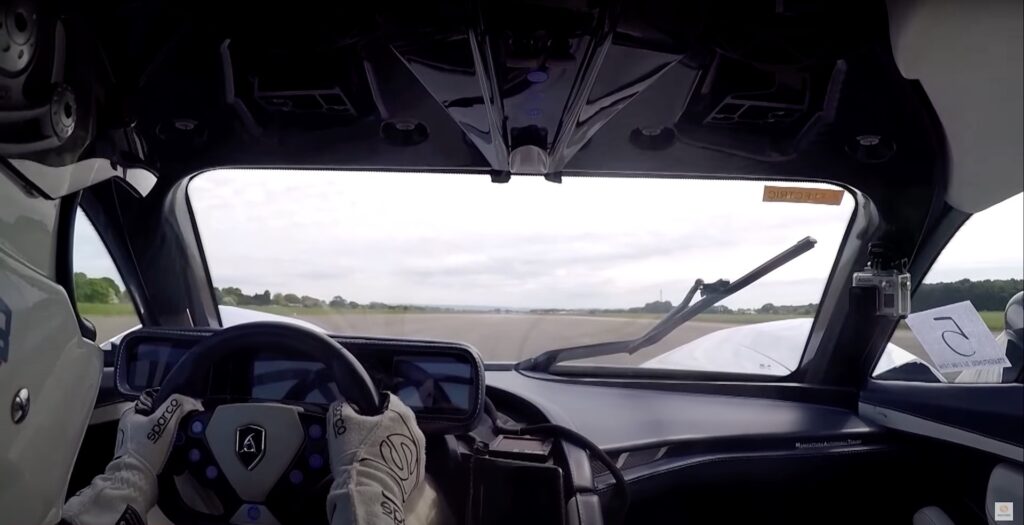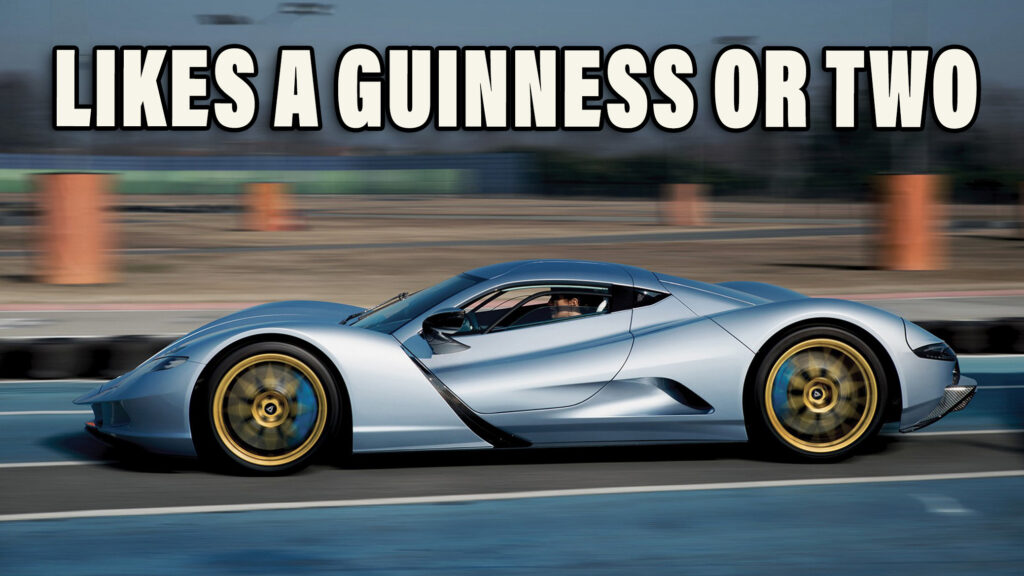At the height of the muscle car boom in the late 1960s the high watermark for straight-outta-the-showroom street performance was a high-13-second quarter mile time with a terminal speed of just over 100 mph (161 km/h). Things have changed a bit since then. Japan’s Aspark Owl electric hypercar just broke two world records, one of which saw it average almost 200 mph (322 km/h) over a quarter mile. Yes, we said average.
Setting two records in one day is rather less impressive than setting 23, which is what Aspark’s rival, Rimac, did with its Nevera EV earlier this month. And the records that Rimac set were the kind that most of us are most familiar with, including zero to 60 mph (97 km/h) and quarter mile times, though only Aspark’s were ratified by Guinness.
The two records the Owl set at England’s Elvington airfield (famous for Richard Hammond’s 2006 jet car crash) were average speed over an eighth mile (192.03 mph / 309.02 km/h) and average speed over a quarter mile (198.12 mph / 318.85 km/h). The small difference between those numbers underlines how quickly the hypercar accelerates in the first few seconds after leaving the line on the way to a 249 mph (400 km/h) top speed.
Related: Aspark’s 1,985 HP Owl Goes On Sale In North America And Europe

Aspark made no mention of attempting to set any acceleration records, but it has previously recorded a 1.72-second zero to 60 mph time (the Nevera did 1.74) and claims it should be capable of dropping below 1.7 seconds. This sounds dramatic but is probably a ton less exciting than wrestling a manual Lamborghini Murcielago to the same speed and taking more than twice as long to do it. As with all of these videos of electric cars going fast, we’re struck by how boring they make the performance seem.
The hardware making those feats possible is a quad-motor drivetrain producing 1,985 hp (1,480 kW / 2,012 PS) and 1,475 lb-ft (2,000 Nm) of torque. That draws energy from a surprisingly small 64 kWh battery, though Aspark claims it’s big enough to deliver over 280 miles (450 km) of range, albeit measured using the massively optimistic (yes, even more optimistic), old-style NEDC protocol. Only 50 Owls will be built, with prices starting at €2.9 ($3.5 / £2.6) million.




